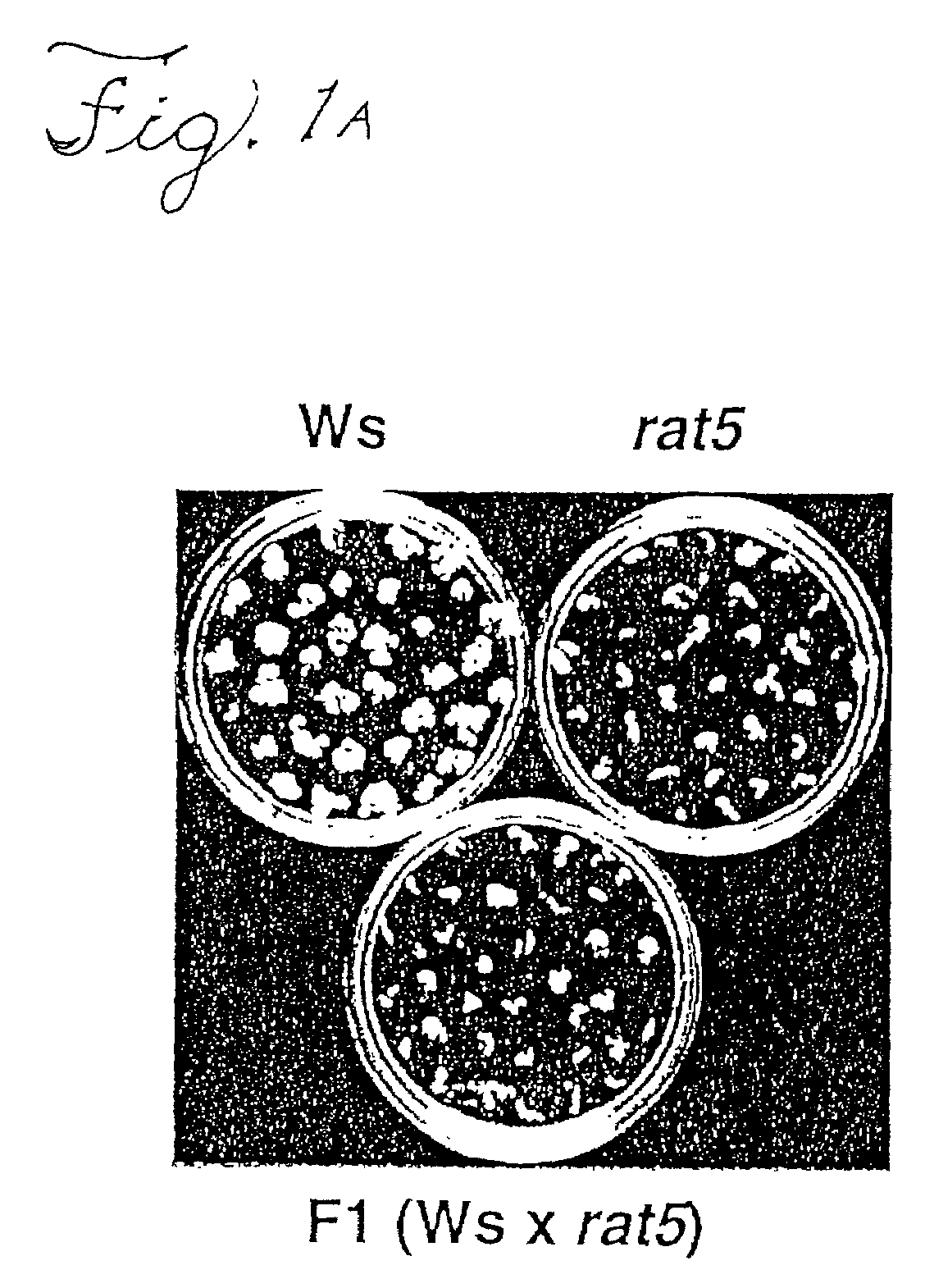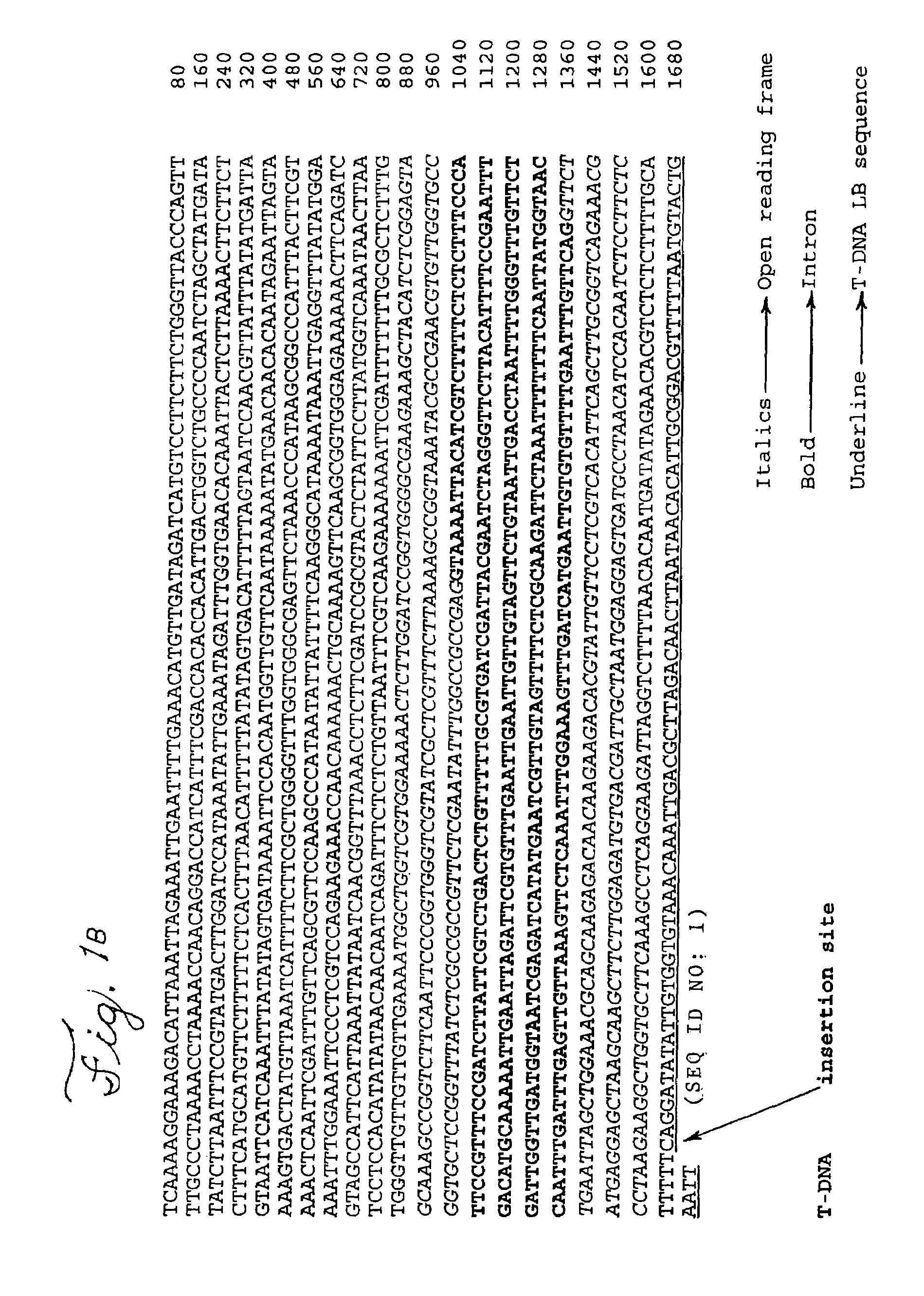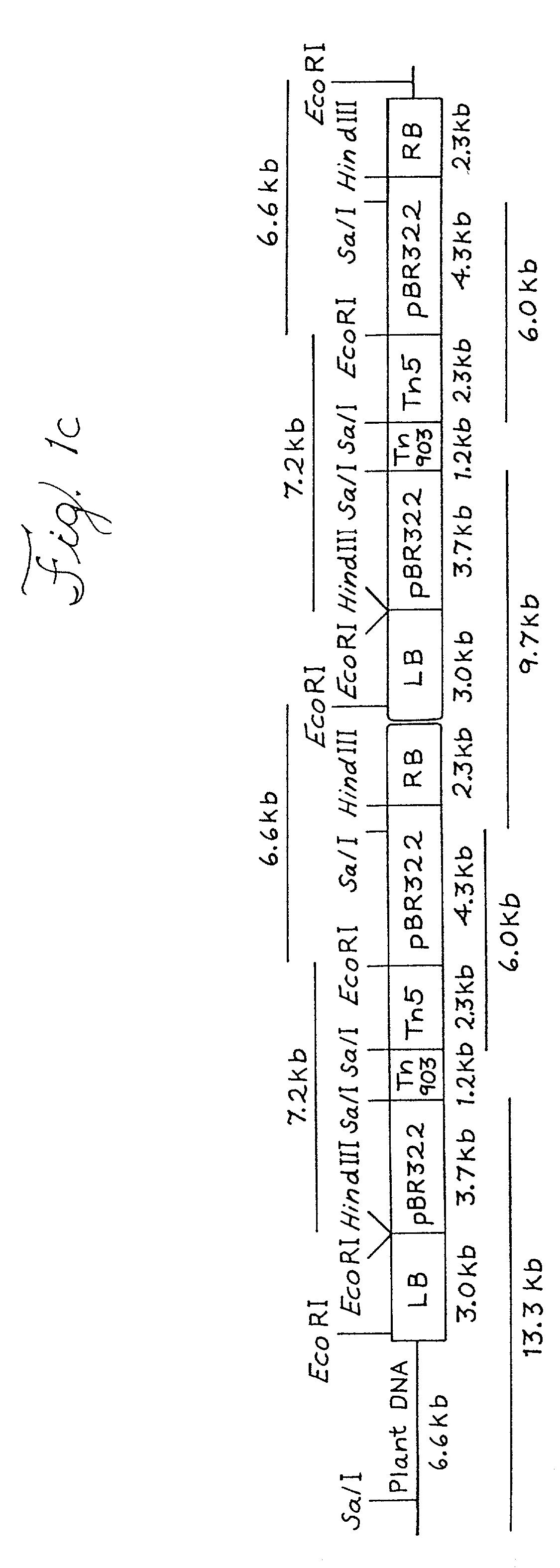Enhanced plant cell transformation by addition of host genes involved in T-DNA integration
a technology of plant cell and host gene, applied in the field of enhanced agrobacterium transformation frequency of plants, can solve the problems of stably transformed, neither teaches nor suggests a role for histone in improving transformation frequency, etc., and achieves stably transformed, enhanced transformation, and increased agrobacterium transformation efficiency
- Summary
- Abstract
- Description
- Claims
- Application Information
AI Technical Summary
Benefits of technology
Problems solved by technology
Method used
Image
Examples
example 1
Results Indicating the Value of Using the Arabidopsis Histone H2A-1 Gene to Improve Plant Transformation
[0050]Evidence from two independent lines of experimentation shows that the Arabidopsis histone H2A-1 is useful to improve the efficiency of Agrobacterium-mediated plant transformation.
[0051]1. Many Arabidopsis ecotypes and mutants cannot be easily transformed by a root transformation method (although they can still be transformed by the flower-dip method). The flower-dip method was used to introduce a histone H2A-1 cDNA, under the control of the CaMV 35S promoter, into a large number of recalcitrant ecotypes and mutants. A number of these transgenic lines were analyzed and evidence emerged that all ecotypes / mutants tested to date can be made competent for root transformation when they over-express the H2A-1 gene. These include mutants in the Agrobacterium attachment process (rat1 and rat3), T-DNA integration (rat17, rat18, rat20, and rat22), a chromatin mutant (HAT6), and several...
PUM
| Property | Measurement | Unit |
|---|---|---|
| Efficiency | aaaaa | aaaaa |
| Level | aaaaa | aaaaa |
Abstract
Description
Claims
Application Information
 Login to View More
Login to View More - R&D
- Intellectual Property
- Life Sciences
- Materials
- Tech Scout
- Unparalleled Data Quality
- Higher Quality Content
- 60% Fewer Hallucinations
Browse by: Latest US Patents, China's latest patents, Technical Efficacy Thesaurus, Application Domain, Technology Topic, Popular Technical Reports.
© 2025 PatSnap. All rights reserved.Legal|Privacy policy|Modern Slavery Act Transparency Statement|Sitemap|About US| Contact US: help@patsnap.com



